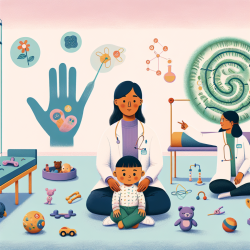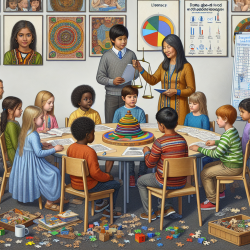Introduction
As a Special Education Director, understanding the intricate dynamics of adolescent behavior is crucial. The research article titled "Reciprocal associations between peer problems and non-suicidal self-injury throughout adolescence" by Lisa De Luca et al. provides valuable insights into the complex relationship between peer problems and non-suicidal self-injury (NSSI) among adolescents. This blog aims to help practitioners enhance their skills by implementing the findings of this research or encouraging further exploration.
Key Findings
The study investigated the reciprocal associations between peer problems, such as peer victimization, friendship stress, and loneliness, and NSSI throughout adolescence. The researchers used Random Intercept Cross-Lagged Panel Models (RI-CLPMs) to analyze data from 866 adolescents over six waves of data collection. The results revealed several key findings:
- Higher-than-usual levels of NSSI predicted increased levels of friendship stress, loneliness, and peer victimization at subsequent time points.
- Most effects of NSSI on peer problems were attenuated and explained by within-person fluctuations in depressive symptoms.
- No within-person cross-lagged effects from peer problems to NSSI were found.
Implications for Practitioners
These findings have significant implications for practitioners working with adolescents. Here are some ways practitioners can apply this research to improve their practice:
- Focus on Underlying Factors: Recognize that the relationship between peer problems and NSSI may be influenced by underlying factors such as depressive symptoms. Addressing these underlying issues can be crucial in interventions.
- Enhance Peer Support: Encourage the development of supportive peer relationships to mitigate the impact of NSSI on peer problems. Creating a positive social environment can help reduce friendship stress and loneliness.
- Monitor Changes Over Time: Use longitudinal data to monitor changes in adolescents' behavior and peer interactions. This can help identify patterns and provide timely interventions.
Encouraging Further Research
While this study provides valuable insights, it also highlights the need for further research in this area. Practitioners are encouraged to explore additional factors that may contribute to the relationship between peer problems and NSSI. By staying informed about the latest research, practitioners can continuously improve their understanding and interventions.
Conclusion
Understanding the reciprocal associations between peer problems and NSSI is essential for practitioners working with adolescents. By implementing the findings of this research, practitioners can enhance their skills and provide more effective support to students. To read the original research paper, please follow this link: Reciprocal associations between peer problems and non-suicidal self-injury throughout adolescence.










